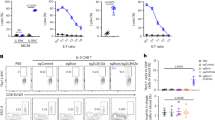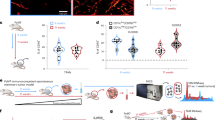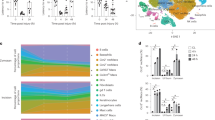Abstract
TISSUE collagenase has been detected in inflamed human tissues by Fullmer and Gibson1, and in some malignant neoplasms by Riley and Peacock2. The possible role of tissue collagenase in neoplastic spread has been suggested by Birbeck and Wheatley3 from an electron microscopic study of the invasion of ascites tumour cells into the abdominal wall of BALB/c mice. They reported that the tumour cells appeared to be actively destroying adjacent normal tissues, which is suggestive of the activity of tissue-destroying enzymes derived from the neoplastic cells. The finding of collagenase activity in human and animal tumours by Riley and Peacock2, Campbell4, and Dresden, Heilman and Schmidt5, prompted a study into the effect that collagenase inhibitors might have on the spread of neoplastic disease. It has been reported by Brown and Weller3 that corneal ulcerations which inevitably occur following severe alkali burns are due to endogenously produced collagenase and that they can be prevented by topical application of solutions of collagenase inhibitors such as cysteine. The present investigation was designed to test our hypothesis that collagenase produced in malignant neoplasms is a factor in neoplastic invasion and that by inhibiting its activity the arrest of a malignant neoplastic disease could be achieved. The results reported here of initial experiments demonstrate the beneficial effects of cysteine on the survival rates of animals into which malignant thymomas were transplanted.
This is a preview of subscription content, access via your institution
Access options
Subscribe to this journal
Receive 51 print issues and online access
$199.00 per year
only $3.90 per issue
Buy this article
- Purchase on Springer Link
- Instant access to full article PDF
Prices may be subject to local taxes which are calculated during checkout
Similar content being viewed by others
References
Fullmer, H. M., and Gibson, W. A., Nature, 209, 728 (1966).
Riley, W., and Peacock, E., Proc. Soc. exp. Biol., 124, 207 (1967).
Birbeck, M.S.C., and Wheatley, D. N., Cancer Res., 25, 490 (1965).
Campbell, N. R., J. dent. Res., 50, 740 (1971).
Dresden, M. H., Heilman, S. A., and Schmidt, J. D., Cancer Res., 32, 993 (1972).
Brown, S. A., and Weller, C. A., Trans. Am. Acad. Ophthal. Otolaryng., 24, 375 (1970).
Kang, A. H., Nagai, Y., Piez, K. A., and Gross, J., Biochemistry, 5, 509 (1966).
Zippin, C., and Armitage, P., Biometrics, 665 (1966).
Slansky, H. H., and Gnadinger, M. C., Arch. Ophthal., 82, 108 (1969).
Brown, S. I., Weller, C. A., and Vidrich, A. M., Am. J. Ophthal., 5, 744 (1970).
Author information
Authors and Affiliations
Rights and permissions
About this article
Cite this article
CAMPBELL, N., READE, P. & RADDEN, B. Effect of cysteine on the survival of mice with transplanted malignant thymoma. Nature 251, 158–159 (1974). https://doi.org/10.1038/251158a0
Received:
Revised:
Issue Date:
DOI: https://doi.org/10.1038/251158a0
This article is cited by
-
Cysteine and survival of transplanted thymoma
Nature (1975)
Comments
By submitting a comment you agree to abide by our Terms and Community Guidelines. If you find something abusive or that does not comply with our terms or guidelines please flag it as inappropriate.



